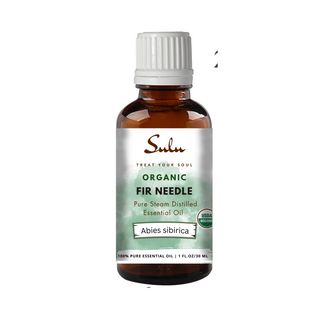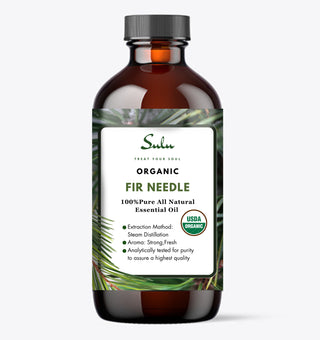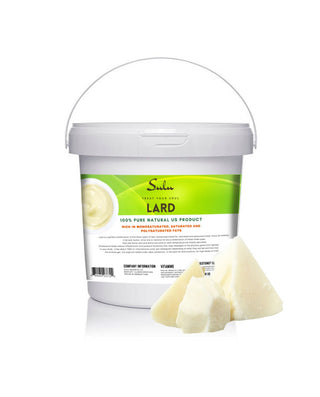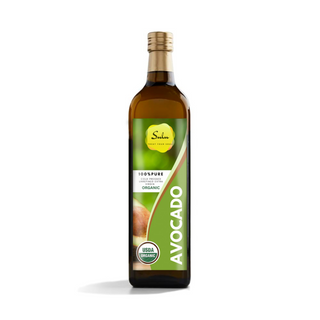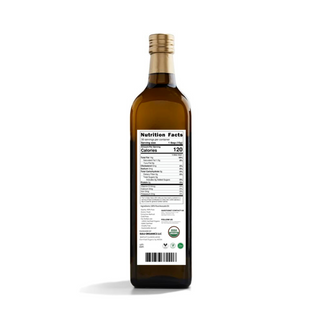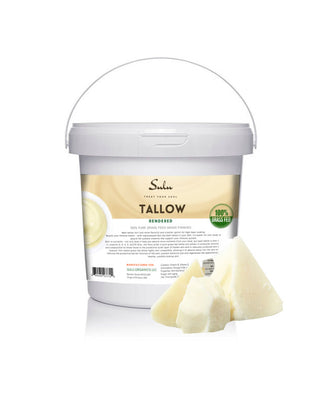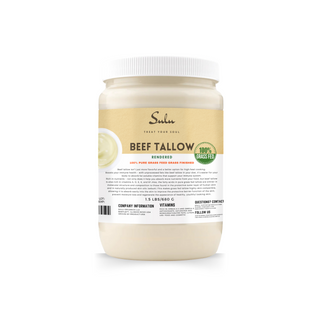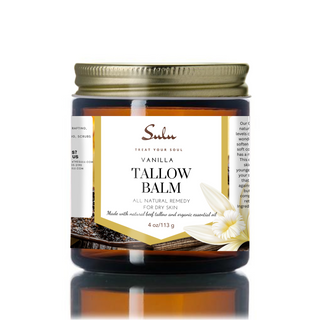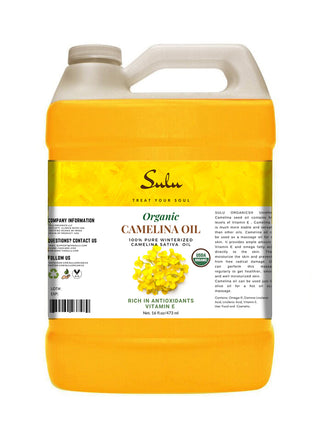Wholesale Discount
Get a 25% wholesale discount for orders over $500 . Discount applied automatically at checkout.
-
Botanical Name: Abies
Method of Extraction: Steam Distilled
Parts Used: Fir
Consistency: Thin
Perfumery Note: Top
Scent: Fresh, herbaceous, medicinal scent
NOTE:
5 ML/ 10 ML OILS ARE WITH EURO DROPPERS
14 ML/29 ML/ 59 ML ARE WITH GLASS BULB DROPPERS
OTHER BIGGER SIZES DO NOT INCLUDE DROPPERS
Fir needle essential oil benefits are derived from fir trees – yes, the popular Christmas tree species! As a member of the pine family, fir (Abies) are evergreen trees with flat needles and raised cones. Within the category of fir, there are dozens of subspecies. Some of the more prominent varieties include Spanish, white, balsam, and silver firs.
Just as the resins and oils protect and heal the tree, we can use the essential oils of this ancient tree for our own healing and protective purposes. These five benefits are some of the strongest effects fir oil has to offer.
When specific tree subspecies are indicated, it will be noted. Otherwise, balsam is most commonly chosen for essential oil production. Here are some incredible healing benefits of fir oils.
1. Fir Needle Essential Oil Benefits – Antibacterial Wound Healing and Illness Prevention
Essential oils as antibacterial substances serve a vital purpose in our era. At various points throughout human history, there have been theories of disease – what causes it, how you prevent it, and how you heal it. At one point, the miasma theory believed that bad smells caused disease, and it was then that aromatic spices and herbs were burned for their fragrance.
While the replacement theory – germ theory – isn't necessarily inaccurate, following the theory to its logical end sent us frantically sterilizing our homes, surfaces, and hands to the point that our bodies began to “forget” how to handle microbes, and the microbes that remained got stronger.
In truth, we actually need some dirt and microbes to keep the immune system “on its toes,” so to speak, and ready to handle real threats. And, if the body can handle more threats, antibiotics and harsh antibiotics are used less frequently, thus slowing the creation of antibiotic-resistant superbugs.
Ironically, this circles us back to aromatic substances – not to prevent disease, but to handle microbes in a way that supports the body and skirts harsh treatments that lead to resistance.
Where does fir oil fit in? As natural antibacterial substances, fir essential oils can be utilized to keep bacterial exposure and growth in check. This might mean effective cleaning solutions or the prevention of infection or treatment of illness.
In 2006, an analysis of balsam fir indicated efficacy against the Staph. bacteria. (3) Before that, a group of fir oils were found to be active against Listeria. (4) The presence of alpha-pinene seems to be one cause of fir oil's antibacterial benefits, a compound shared with rosemary, eucalyptus, and orange essential oils.
While orange is also used for food safety and cleaning purposes, note that rosemary and eucalyptus are more prominently known as respiratory health herbs. Inhaling antibacterial oils like these, including fir oils, can help to slow the progression of a bacterial respiratory infection.
Indications: Cleaning sprays and solutions; direct inhalation during respiratory illness; diffusion for illness-prevention.
2. Fir Needle Essential Oil Benefits – Anti-inflammatory Tissue Healing and Pain Relief
With the immune system and illness prevention in mind, we can move to anti-inflammatory benefits of fir essential oils. In ideal circumstances, inflammation is our ally – the “response team” that the body sends to targeted areas in order to instigate and facilitate healing.
Obviously, we don't live in an ideal world and inflammation can be anything but normal in far too many cases. The inflammatory response in overdrive or in unnecessary situations can be painful and even risky.
Put simply, anti-inflammatory substances tell the body to stop sending inflammation, which can result in pain relief, disease prevention, and an overall sense of just feeling better.
Multiple species and parts of the fir family have demonstrated anti-inflammatory actions. From the cones of Turkish fir trees, an essential oil has been isolated that promotes wound healing via anti-inflammatory actions. (5)
In Taiwan, the heartwood of fir trees produce an essential oil that is rich in sesquiterpenes (compared with the monoterpenes of the oil from needles). The oil was able to slow the inflammatory response, with researchers concluding that it could play a role in future anti-inflammatory drugs for “preventing and ameliorating inflammation-related diseases.” (6)
Experimenting with different kinds of fir trees and the parts used for the oil might give us some new and powerful ways to benefit from fir.
For essential oil use, working anti-inflammatory oils into topical preparations is especially helpful for pain relief. Massaging the oils and their active compounds into the skin stimulates the muscles, skin, and lymphatic systems, relaxes the individual, and has the added benefit of inhaling the aroma while the topical application is absorbed.
Indications: Utilizing varied sources of fir; massage oils for pain relief; inhaled for inflammatory respiratory conditions.
3. Fir Needle Essential Oil Benefits – Muscle Relaxant Respiratory and Painful Condition Healing
Often, with inflammatory inhibition comes pain relief and muscle relaxation. Combined with antibacterial properties, fir oils begin to add up as powerful healing conglomerates. The application potentials are strong:
Relaxing respiratory muscles, reducing airway inflammation, fighting respiratory bacteria
Relaxing tense and sore muscles, reducing painful inflammation
Inhibiting topical bacteria on a wound, reducing added inflammation (and, therefore, pain)
In a study on antioxidant property, which we'll get to in more detail momentarily, the researchers noted early on that these combinations are well-known by those who utilize firs for medicine, notably the silver fir:
The essential oil of silver fir (Abies alba) is known to help [the] respiratory system and have [an] easing and soothing effect for muscle. (7)
The oil studied in that particular trial contained primarily bornyl acetate and camphene, the latter of the two being recognized for respiratory wellness as well.
Bornyl acetate is found heavily in conifers like fir, and is a powerful anti-inflammatory agent. In 2014, a group of researchers evaluated the way that bornyl acetate might work in the body. They were specifically concerned about and saw good results regarding Rheumatoid and osteoarthritis, both of which accumulate inflammation in unnecessary and painful ways. (8)
Indications: Most fir oils; inhalation and diffusion for respiratory wellness; topical massages and ointments; wound healing sprays and salves.
4. Fir Needle Essential Oil Benefits – Detoxification: Cellular Healing
Within the analysis of silver fir that led to the nod toward respiratory and muscle relaxing effects, fir essential oils can be excellent detoxifiers – on a cellular level!
Antioxidants are hot contenders as the body's MVP, especially as we live in an ever-toxic world. When cells go off track thanks to toxic exposures to things like environmental pollution or even mental and emotional stress, antioxidants get to work removing the threat and scrubbing the cell clean.
Essential oils of fir needles are potential antioxidants, with silver fir standing out in this study as an excellent scavenger. (9) Certain antioxidants have certain tasks; scavengers roam the body, poring over cells to spot any intrusions or oxidative damage. In other words – scavengers are some of your strongest allies!
Oxidative stress damages the skin heavily thanks to direct, daily contact with toxins and pollutants. Antioxidants, then, are excellent components in skin treatments.
We also struggle against oxidative damage in heart health, respiratory function, and muscle repair. Antioxidants, again, can be an ally in each painful and/or dangerous situation.
Indications: Topical treatments for skin rejuvenation and repair; inhalation for relaxation and respiratory or circulatory wellness and repair.
5. Fir Needle Essential Oil Benefits – Anti-tumor Cancer Healing Potential
By definition, cancer cells are the very target that an antioxidant scavenger would be searching for. While cancer cells attempt to replicate indefinitely, eventually taking over that organ or system or even the body, antioxidants seek to stop the cells – including cancer cells – dead in their tracks before replication can even occur.
This connection to cancer is just one of the many reasons researchers are working so closely with essential oils in an attempt to pin down specific uses and mechanisms of action that can prevent and treat cancer.
We aren't there yet, but researchers have found many essential oils that exhibit antioxidant, cytotoxic (cancer cell-killing), and antimutagenic properties that, at least in the lab, show promise of preventing cancer, keeping it from spreading, and even killing it outright.
Balsam fir essential oil is among these anticancer hopefuls.
Materials: pure high quality fir needle oil
Botanical Name: Abies
Method of Extraction: Steam Distilled
Parts Used: Fir
Consistency: Thin
Perfumery Note: Top
Scent: Fresh, herbaceous, medicinal scent
NOTE:
5 ML/ 10 ML OILS ARE WITH EURO DROPPERS
14 ML/29 ML/ 59 ML ARE WITH GLASS BULB DROPPERS
OTHER BIGGER SIZES DO NOT INCLUDE DROPPERS
Fir needle essential oil benefits are derived from fir trees – yes, the popular Christmas tree species! As a member of the pine family, fir (Abies) are evergreen trees with flat needles and raised cones. Within the category of fir, there are dozens of subspecies. Some of the more prominent varieties include Spanish, white, balsam, and silver firs.
Just as the resins and oils protect and heal the tree, we can use the essential oils of this ancient tree for our own healing and protective purposes. These five benefits are some of the strongest effects fir oil has to offer.
When specific tree subspecies are indicated, it will be noted. Otherwise, balsam is most commonly chosen for essential oil production. Here are some incredible healing benefits of fir oils.
1. Fir Needle Essential Oil Benefits – Antibacterial Wound Healing and Illness Prevention
Essential oils as antibacterial substances serve a vital purpose in our era. At various points throughout human history, there have been theories of disease – what causes it, how you prevent it, and how you heal it. At one point, the miasma theory believed that bad smells caused disease, and it was then that aromatic spices and herbs were burned for their fragrance.
While the replacement theory – germ theory – isn't necessarily inaccurate, following the theory to its logical end sent us frantically sterilizing our homes, surfaces, and hands to the point that our bodies began to “forget” how to handle microbes, and the microbes that remained got stronger.
In truth, we actually need some dirt and microbes to keep the immune system “on its toes,” so to speak, and ready to handle real threats. And, if the body can handle more threats, antibiotics and harsh antibiotics are used less frequently, thus slowing the creation of antibiotic-resistant superbugs.
Ironically, this circles us back to aromatic substances – not to prevent disease, but to handle microbes in a way that supports the body and skirts harsh treatments that lead to resistance.
Where does fir oil fit in? As natural antibacterial substances, fir essential oils can be utilized to keep bacterial exposure and growth in check. This might mean effective cleaning solutions or the prevention of infection or treatment of illness.
In 2006, an analysis of balsam fir indicated efficacy against the Staph. bacteria. (3) Before that, a group of fir oils were found to be active against Listeria. (4) The presence of alpha-pinene seems to be one cause of fir oil's antibacterial benefits, a compound shared with rosemary, eucalyptus, and orange essential oils.
While orange is also used for food safety and cleaning purposes, note that rosemary and eucalyptus are more prominently known as respiratory health herbs. Inhaling antibacterial oils like these, including fir oils, can help to slow the progression of a bacterial respiratory infection.
Indications: Cleaning sprays and solutions; direct inhalation during respiratory illness; diffusion for illness-prevention.
2. Fir Needle Essential Oil Benefits – Anti-inflammatory Tissue Healing and Pain Relief
With the immune system and illness prevention in mind, we can move to anti-inflammatory benefits of fir essential oils. In ideal circumstances, inflammation is our ally – the “response team” that the body sends to targeted areas in order to instigate and facilitate healing.
Obviously, we don't live in an ideal world and inflammation can be anything but normal in far too many cases. The inflammatory response in overdrive or in unnecessary situations can be painful and even risky.
Put simply, anti-inflammatory substances tell the body to stop sending inflammation, which can result in pain relief, disease prevention, and an overall sense of just feeling better.
Multiple species and parts of the fir family have demonstrated anti-inflammatory actions. From the cones of Turkish fir trees, an essential oil has been isolated that promotes wound healing via anti-inflammatory actions. (5)
In Taiwan, the heartwood of fir trees produce an essential oil that is rich in sesquiterpenes (compared with the monoterpenes of the oil from needles). The oil was able to slow the inflammatory response, with researchers concluding that it could play a role in future anti-inflammatory drugs for “preventing and ameliorating inflammation-related diseases.” (6)
Experimenting with different kinds of fir trees and the parts used for the oil might give us some new and powerful ways to benefit from fir.
For essential oil use, working anti-inflammatory oils into topical preparations is especially helpful for pain relief. Massaging the oils and their active compounds into the skin stimulates the muscles, skin, and lymphatic systems, relaxes the individual, and has the added benefit of inhaling the aroma while the topical application is absorbed.
Indications: Utilizing varied sources of fir; massage oils for pain relief; inhaled for inflammatory respiratory conditions.
3. Fir Needle Essential Oil Benefits – Muscle Relaxant Respiratory and Painful Condition Healing
Often, with inflammatory inhibition comes pain relief and muscle relaxation. Combined with antibacterial properties, fir oils begin to add up as powerful healing conglomerates. The application potentials are strong:
Relaxing respiratory muscles, reducing airway inflammation, fighting respiratory bacteria
Relaxing tense and sore muscles, reducing painful inflammation
Inhibiting topical bacteria on a wound, reducing added inflammation (and, therefore, pain)
In a study on antioxidant property, which we'll get to in more detail momentarily, the researchers noted early on that these combinations are well-known by those who utilize firs for medicine, notably the silver fir:
The essential oil of silver fir (Abies alba) is known to help [the] respiratory system and have [an] easing and soothing effect for muscle. (7)
The oil studied in that particular trial contained primarily bornyl acetate and camphene, the latter of the two being recognized for respiratory wellness as well.
Bornyl acetate is found heavily in conifers like fir, and is a powerful anti-inflammatory agent. In 2014, a group of researchers evaluated the way that bornyl acetate might work in the body. They were specifically concerned about and saw good results regarding Rheumatoid and osteoarthritis, both of which accumulate inflammation in unnecessary and painful ways. (8)
Indications: Most fir oils; inhalation and diffusion for respiratory wellness; topical massages and ointments; wound healing sprays and salves.
4. Fir Needle Essential Oil Benefits – Detoxification: Cellular Healing
Within the analysis of silver fir that led to the nod toward respiratory and muscle relaxing effects, fir essential oils can be excellent detoxifiers – on a cellular level!
Antioxidants are hot contenders as the body's MVP, especially as we live in an ever-toxic world. When cells go off track thanks to toxic exposures to things like environmental pollution or even mental and emotional stress, antioxidants get to work removing the threat and scrubbing the cell clean.
Essential oils of fir needles are potential antioxidants, with silver fir standing out in this study as an excellent scavenger. (9) Certain antioxidants have certain tasks; scavengers roam the body, poring over cells to spot any intrusions or oxidative damage. In other words – scavengers are some of your strongest allies!
Oxidative stress damages the skin heavily thanks to direct, daily contact with toxins and pollutants. Antioxidants, then, are excellent components in skin treatments.
We also struggle against oxidative damage in heart health, respiratory function, and muscle repair. Antioxidants, again, can be an ally in each painful and/or dangerous situation.
Indications: Topical treatments for skin rejuvenation and repair; inhalation for relaxation and respiratory or circulatory wellness and repair.
5. Fir Needle Essential Oil Benefits – Anti-tumor Cancer Healing Potential
By definition, cancer cells are the very target that an antioxidant scavenger would be searching for. While cancer cells attempt to replicate indefinitely, eventually taking over that organ or system or even the body, antioxidants seek to stop the cells – including cancer cells – dead in their tracks before replication can even occur.
This connection to cancer is just one of the many reasons researchers are working so closely with essential oils in an attempt to pin down specific uses and mechanisms of action that can prevent and treat cancer.
We aren't there yet, but researchers have found many essential oils that exhibit antioxidant, cytotoxic (cancer cell-killing), and antimutagenic properties that, at least in the lab, show promise of preventing cancer, keeping it from spreading, and even killing it outright.
Balsam fir essential oil is among these anticancer hopefuls.
Materials: pure high quality fir needle oil
Read Reviews



